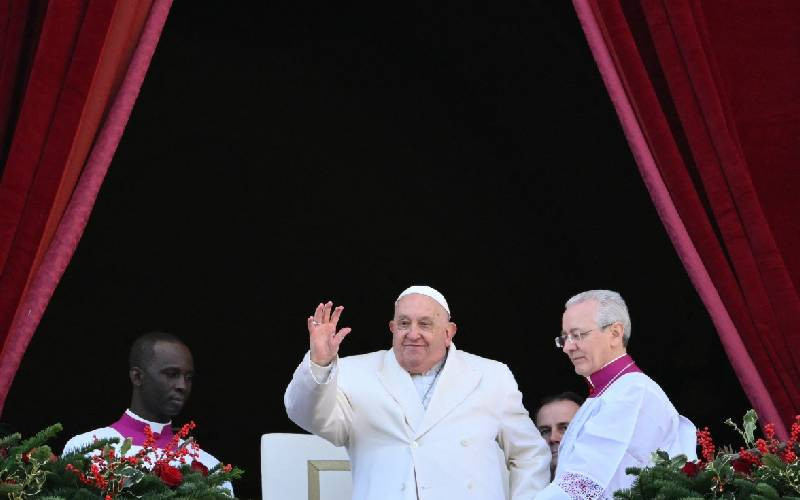By PHILIP ETYANG
In Beijing: Away from busy lifestyles dominated largely by work and school, more Chinese nationals are finding time to visit tourist attraction sites in Beijing.
The most frequented sites in Beijing include the National Museum of China, Tiananmen Square, the Great Wall and The Forbidden City.
The Forbidden City Museum sits trapped between Jingshan Park to the North, the Department of Civil Affairs to the east and the large Middle Sea to the West.
To the South, squats the Tiananmen Square. To the southeast of the Forbidden City, peeping shyly through the gap between the Tiananmen West Train Station and W Chang Avenue lies the giant egg building which houses the National Centre for the Performing Arts.
Located right in the heart of Beijing, the Imperial Palace now turned museum, served as the abode for over 24 emperors from both the Ming and Qing empires from 1420 to 1911; the last two imperial dynasties before the revolution led by Dr Sun Zhongshan led to the formation of the Republic of China and later the People’s Republic of China. However, the family of the last emperor Puyi stayed in the palace court until 1924 when he was expelled and the palace turned into a modern museum.
Restricted to only the emperor, his family consisting of several wives and concubines, and their servants, the imperial palace gained its name as the Forbidden City, as ordinary men were prohibited from the palace compound.
Patronised everyday by thousands of mainly local tourists, the UNESCO-listed museum has more than 8,000 buildings covering just about 720,000 square metres, and divided into two main areas; the outer and inner court.
The buildings are all made of wooden structures carefully sculptured by hand. The museum is the only wooden museum in the world and tourists upon entry are prohibited from smoking to avert any potential fires.
With approximately 20,000 tourists a day in the winter and 80,000 tourists in the summer visiting the museum, The Forbidden City rakes in billions in revenue for the Chinese economy.
China’s Tourism Industry Report 2013-2017 indicates the revenue from the industry amounted to $18 billion last year with an expected increase in the period 2013-2017.
“China tourism industry is made up of domestic tourism, inbound tourism and outbound tourism. Of these, domestic tourism is of absolute dominance in terms of either population or revenue,” the report reads in part.
It goes on to state: “It is estimated that the number of domestic tourists in 2013 will claim 3.275 billion person-times, standing at 95.3 per cent, with the targeted revenue increasing by 15.4 per cent year-on-year to $16 billion.”
The wooden buildings, constructed between 1406 and 1420, are artistically adorned with mainly yellow glazed tiles on the walls and red sculptured relics on the roof. In traditional Chinese art and culture, red is associated with luck and fortune.
It is believed to ward away evil. In modern-day China, red is associated with the communist government. The maincolour on China’s national flag is red. The RMB 100 note, China’s highest currency denomination is also dominantly red in colour.
From a vantage point, the entire Forbidden City compound is dotted with red roofs typically arranged like a traditional Chinese homestead where the outer court houses the servants, the inner court the emperor and male family members, while the back side houses the emperor’s wives and concubines.
The expansive compound is also filled with expensive antics made from mainly bronze, gold and stone. Arguably thehighlight is the 16.75 metre long and 3.07 metres wide. The carving is 1.7 metres and eight more than 200 tones hence the name Large stone carving. The stone was quarried from the western part of Beijing; Fangshan and transported to the Palace Museum.
In Kenya, the tourism industry is only second to agriculture as a foreign exchange earner with the 19 national parks and game reserves raking in most of the revenue.
Last year saw Kenya declared the world’s leading safari destination a tthe 20th World Travel Awards in Doha, Qatar. This was after the Kenya Tourism Board was voted Africa’s leading Tourism Board in Africa in October.
An eighth world wonder, the annual wildebeest migration is one of the country’s selling points. It offers a unique spectacle of the animals crossing the Mara River, infested with some of Africa’s largest crocodiles.
The wildebeests make their way to the Masaai Mara National Reserve in Kenya from the Serengeti in Tanzania.
Kenyans should learn a lot from the Chinese who everyday find time away from their schedules to tour the various attraction sites in the country such as the Forbidden City and help grow the industry and by extension the economy.
 The Standard Group Plc is a
multi-media organization with investments in media platforms spanning newspaper
print operations, television, radio broadcasting, digital and online services. The
Standard Group is recognized as a leading multi-media house in Kenya with a key
influence in matters of national and international interest.
The Standard Group Plc is a
multi-media organization with investments in media platforms spanning newspaper
print operations, television, radio broadcasting, digital and online services. The
Standard Group is recognized as a leading multi-media house in Kenya with a key
influence in matters of national and international interest.
 The Standard Group Plc is a
multi-media organization with investments in media platforms spanning newspaper
print operations, television, radio broadcasting, digital and online services. The
Standard Group is recognized as a leading multi-media house in Kenya with a key
influence in matters of national and international interest.
The Standard Group Plc is a
multi-media organization with investments in media platforms spanning newspaper
print operations, television, radio broadcasting, digital and online services. The
Standard Group is recognized as a leading multi-media house in Kenya with a key
influence in matters of national and international interest.





